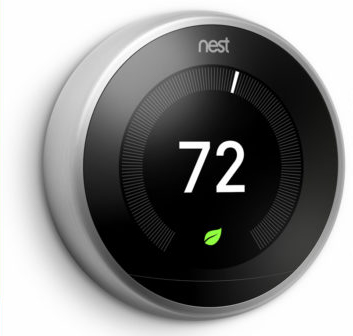With the rise of the Internet of Things and a drive towards greater energy savings, it was only a matter of time before the two became one and the same.
The Promise of Digital Energy Response
Neil Matouka
Project Manager
Local Government Commission
With the rise of the Internet of Things and a drive towards greater energy savings, it was only a matter of time before the two became one and the same. Technology for saving energy is nothing new, but as equipment such as battery storage and smart thermostats continue to drop in price, a critical mass has been reached for demand-side deployment of digital energy services under demand response models.
 Anyone who purchased a Nest, or other smart thermostat, could program their thermostat to save energy by optimizing the use of energy; turn the temperature down (or up) when nobody is home, return the temperature to the desired level when occupants return. The ease of using connected technologies in the home allows for energy savings which require almost no adaptation or sacrifice on the part of the occupant, save the cost of the device. These savings remained mostly in the homeowner’s pocket, with the grid and utility companies benefiting from some small reduction in overall energy use.
Anyone who purchased a Nest, or other smart thermostat, could program their thermostat to save energy by optimizing the use of energy; turn the temperature down (or up) when nobody is home, return the temperature to the desired level when occupants return. The ease of using connected technologies in the home allows for energy savings which require almost no adaptation or sacrifice on the part of the occupant, save the cost of the device. These savings remained mostly in the homeowner’s pocket, with the grid and utility companies benefiting from some small reduction in overall energy use.
With the ability to access large numbers of these smart devices, such as thermostats, in specific regions using a demand response model, new doors are opening to creating the demand response load of a “virtual power plant.”
Virtual power plants (VPP) are an aggregation of various energy sources that together can simulate the continuous power production capability of a traditional power plant. Germany uses VPPs to tie together small producers, such as solar panels, to generate more reliability for their grid. This is no small feat, requiring constant monitoring and the ability to ramp up or down production in order to compensate for load and production drop-off in any part of the grid. There is no reason, however, the VPPs must only use power production.
In September, Nest announced a deal with Southern California Edison to create a 50 MW “power plant” of reliable load reduction. The plan is to allow SCE to have a 50 MW load reduction that can be accessed instantly at any time. This would allow the utility to avoid bringing on more expensive peaker plants during the height of summer heat, or even prevent blackouts or brownouts from excessive demand.
Again, none of the components of this plan are new; demand response, virtual power plants, and incentivizing home energy efficiency have all been used before. What this particular case shows is the level of penetration available by pairing low-cost connected technology and a traditional utility response model. Looking forward, as battery costs plummet and solar installation increases, we could potentially be seeing the end of peaker plants as we know them.
Local Government Commission Newsletters
Livable Places Update
CURRENTS Newsletter
CivicSpark™ Newsletter
LGC Newsletters
Keep up to date with LGC’s newsletters!
Livable Places Update – April
April’s article: Microtransit: Right-Sizing Transportation to Improve Community Mobility
Currents: Spring 2019
Currents provides readers with current information on energy issues affecting local governments in California.
CivicSpark Newsletter – March
This monthly CivicSpark newsletter features updates on CivicSpark projects and highlights.



